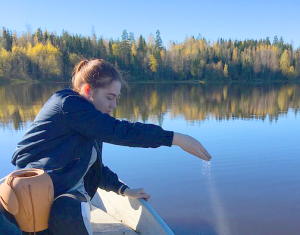Preserving Our Legacy

With the recent availability of DNA kits used to research one’s ancestry, there’s been a resurgence of interest in finding out who our forebears were and where they came from.
 There are several companies that provide these kits with emphasis on different aspects of our history – some deal with the likelihood of our contracting particular medical conditions, while others focus on cultural migrations and the various parts of the world where our ancestors lived.
There are several companies that provide these kits with emphasis on different aspects of our history – some deal with the likelihood of our contracting particular medical conditions, while others focus on cultural migrations and the various parts of the world where our ancestors lived.
This type of DNA research, while it doesn’t focus on specific individuals, has made researching our roots a good deal more accurate and provides a lot of information not previously available to us.
The Old Ways
In the past, we’ve depended on old records from churches, travel and immigration centres, military and census documents, among other sources. Much of this information is mis-recorded, damaged or illegible, so for many people researching their roots, it’s been an adventure trying to find out more about those they came from. One of the most durable and reliable sources of research has been the carvings on old gravestones.

Lost Histories – Then
One of the saddest sights I ever encountered was a graveyard in the Cotswolds in England. The gravestones were all made of “Cotswold stone”, a local yellow limestone, which is easy to carve, but over time, tends to weather and deteriorate. Half the headstones in the cemetery were utterly indecipherable, because the names carved on the front had flaked off and disintegrated, lying crumbled on the ground.
I remember thinking that now no-one would ever know who those people had been or what their stories might have told. If only it were still possible to research them through their last resting place. The dedication shown by their loved ones in having the stones carved was now utterly negated.
Nearby, the ancient village church had been destroyed in a fire. For several hundred years, its records had told of births, deaths, marriages and christenings, so even though the carving on the stones had crumbled, there had been a written record. Now, even that was gone.
 Lost Histories – Now
Lost Histories – Now
In recent years, cremation has become commonplace, so the practice of hunting for records of our ancestors is being further eroded. Many people prefer to have their ashes scattered in a favourite location once they’re gone. Unless their urns are buried in a cemetery with a small carved stone to mark them, these records will also be lost to history.
Nowadays we have access to massive online directories with billions of records of lives, complete with photographs and stories. It’s now possible for anyone, not just professional historians and genealogists, to both research and contribute to the sum of human history. Even though the traditional ways of recording our lives are slowly disappearing, the digital age is offering an alternative.

While digital recording gives us the opportunity to record our lives in much greater detail, it’s vulnerable. It is subject to erasure, either by malicious hacking, electromagnetic interference or neglect. If we want to be remembered by our descendants, and by posterity in general, we need to make sure that our stories are written down, and hard copies are made available to our families.
The Written Word
Most of us won’t bother to publish our memoirs. It can be time-consuming and confusing, particularly for those of us who didn’t grow up with the kind of technology which has transformed our society in recent years. However, we can all leave a written legacy for our families, no matter whether it’s hand-written or created on a computer or word processor. These histories often become treasured family heirlooms, handed down from one generation to the next. Some future descendant may even donate the family’s story to a museum as an invaluable piece of history.
Your story should be one of them.
Happy Writing!

